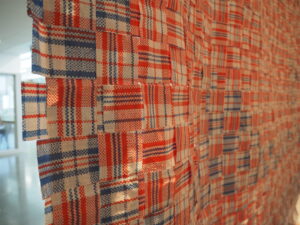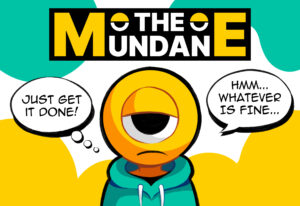Kanji Tsukuri – A Kanji Card Game
Wilson Yuan
Learning a second language is hard.
Some languages utilize the Latin alphabet while others, like Japanese, use their own writing systems. Japanese has 3 writing systems: Hiragana, Katakana, and Kanji. For language learners, the first two systems are relatively easy to grasp. Hiragana and Katakana can be conquered with a few weeks of dedicated studying. Kanji, however, is where most learners get stumped when learning Japanese. Unlike Hiragana or Katakana with 46 unique characters each, Kanji has over 3000 unique characters. To be conversationally fluent, learners must be able to read and recognize at least 2000 unique characters. Most learners see this learning curve as less than a hill and more of a wall.
A study tool. In the form of a card game.
What seems like random strokes and lines, in reality, there are patterns when writing or reading Kanji. Each character consists of smaller components supported by a “Radical”. The radical alludes to the greater meaning of the whole character. For the purpose of my project and consistency, I refer to all the smaller components as “Radicals”.
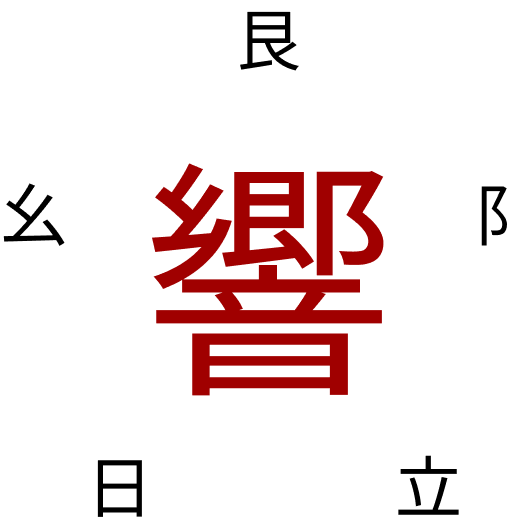
Mnemonics
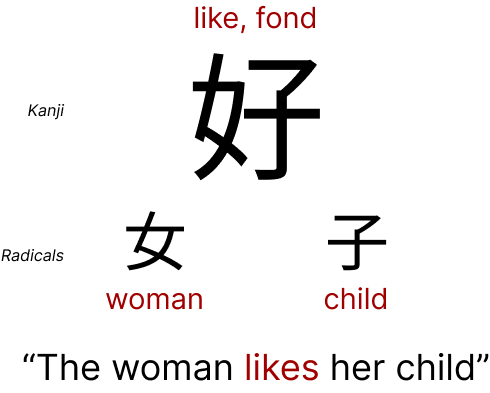
With radicals, learners can use a concept called mnemonics when looking at a Kanji character. According to Tofugu.com, a Japanese learning blog, Mnemonics are “basically just memory devices that help you memorize something.” A learner would take each radical, which would, more often than not, have its own meanings, and create small stories to help them memorize the overall kanji.
Kanji Tsukuri
Kanji Tsukuri is a study tool to assist with learning retention for the hardest of the three Japanese writing systems. This tool will address the steep learning curve involved through a physical card game that involves connecting each component of the written characters to construct or build a Kanji character.
The name “Kanji Tsukuri” literally means Kanji Building.
Card Design
When designing the cards, I had two types of cards in mind: The challenge cards and the radical cards. The challenge cards would be the prompt or flash card while the radical cards are the playing cards for the learners.
Challenge Cards
For the challenge cards, I wanted them to have the ability to be used as flashcards as an additional alternative use. That meant having the Kanji character’s readings and English translation on one side and the Kanji character written out in large on the other side. On one side of the challenge card would be both the on’yomi and kun’yomi readings paired with the English translation or meaning. The other side consists of the Kanji character itself and as well as a few example vocabulary using the Kanji character.
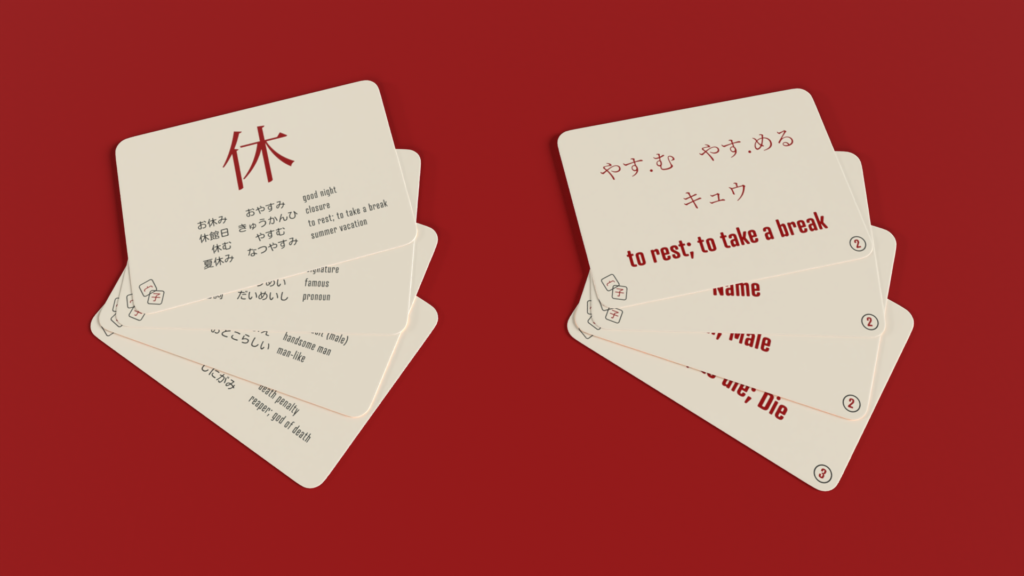
Radical Cards
As for the Radical cards, each transparent square card consists of a single radical. Transparency in the cards is important for gameplay as it allows cards to be stacked and placed closer together. I would eventually add an orientation arrow to the top right corner to let learners know the correct orientation the radical should be placed.
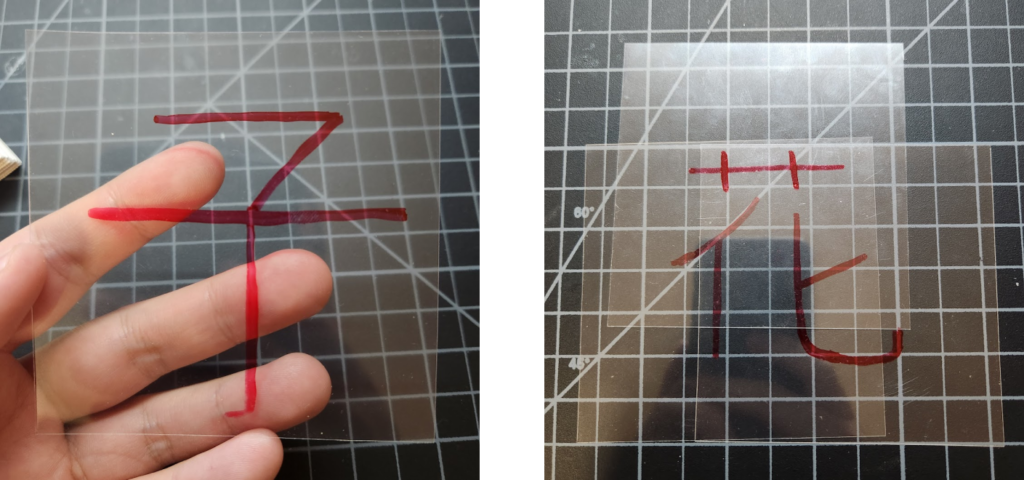
Prototyping
When prototyping physical cards, I only produced 48 challenge cards and around 50 radical cards. If this were to be on a realistic scale, there would be around 400 challenge cards and a lot more radical cards as there would be duplicates of radicals. I estimate around 200 radical cards.

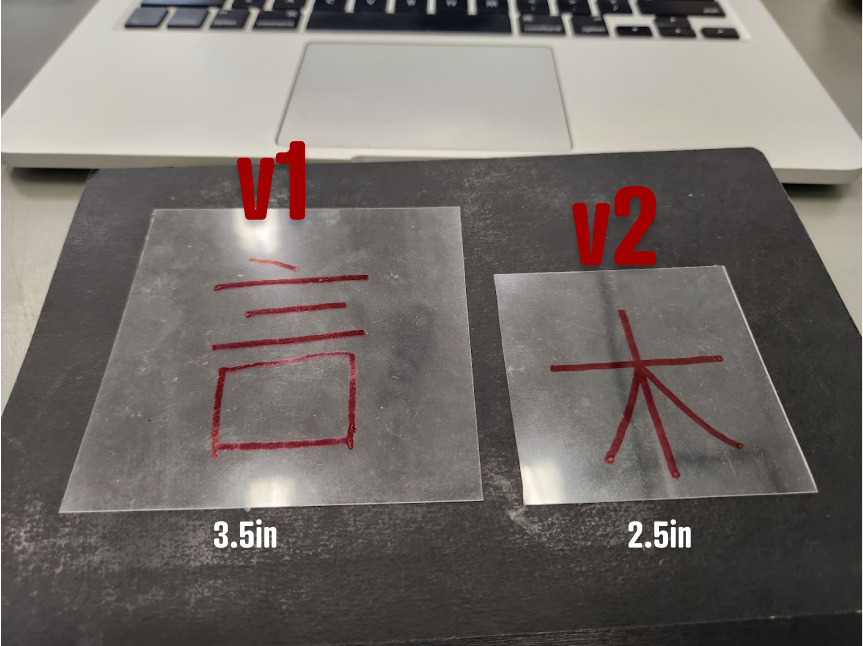

Gameplay and Instruction Design
Prototyping
I started with the gameplay by brain-dumping on my notebook what I initially had in mind when brainstorming this project. This eventually became the actual gameplay of Kanji Tsukuri.
Once details have been written in stone (or in my case, my notebook), I started with sequencing steps and testing whether they made sense or not.
Once testing has been conducted, I made another prototype with images and diagrams in hopes to increase comprehension of the instructions.
After that, I went ahead and designed the “look-and-feel” prototype as if it were to be printed on a tri-fold pamphlet to be included in the game box.
Through all the iterations of gameplay, only one mechanic stayed constant. The act of using the radical cards to “build” the kanji based on the readings and english translation on the challenge card. That is the main core gameplay. What fluctuated through iterations was whether the learner wanted to have a set number of radical cards in their hands and swap out cards or have all radical cards in hand at any given time. I ultimately went with a set of 25 cards in hand. Whether the learner wants to have all cards in hand will be up to them but they will soon know that there will be a lot of radical cards to play with. It is said in the instructions to have 25 but at the end of the day, player’s choice.


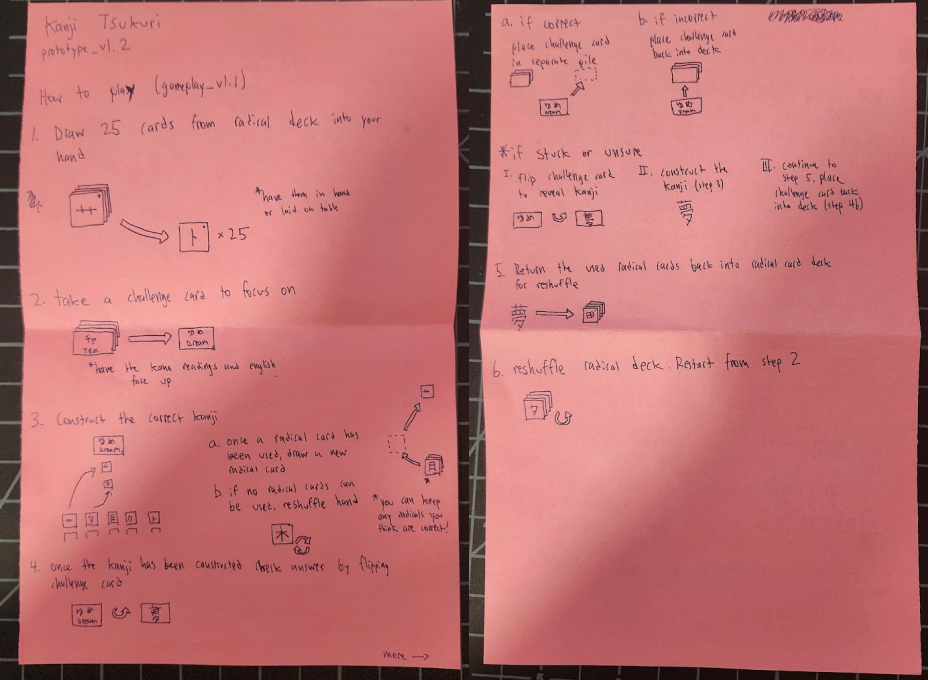
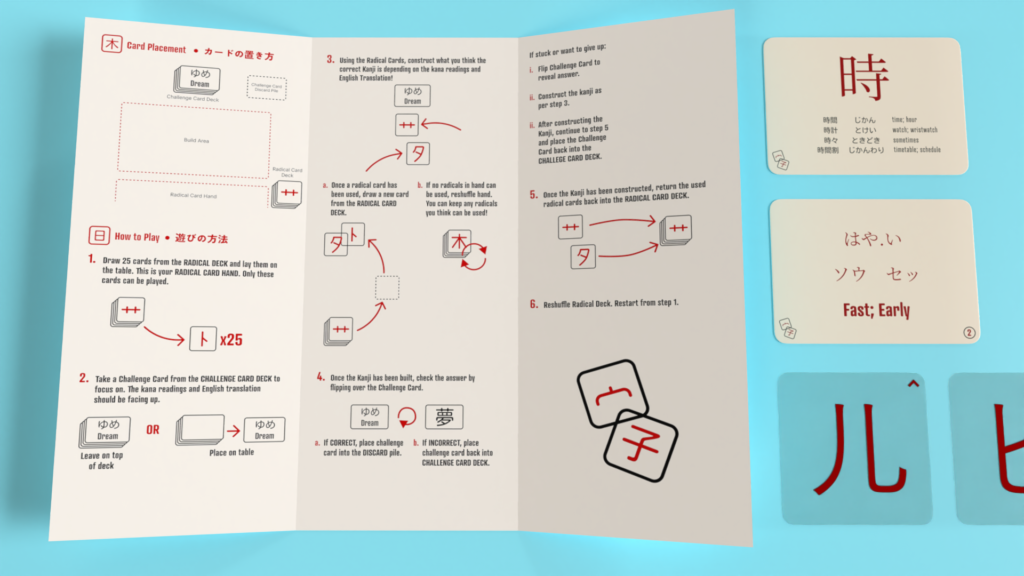
Final Results
Although initially I wanted to get my cards created and printed, I ultimately went with the cheaper route and 3D rendered my cards as if they were really printed out and showcased.
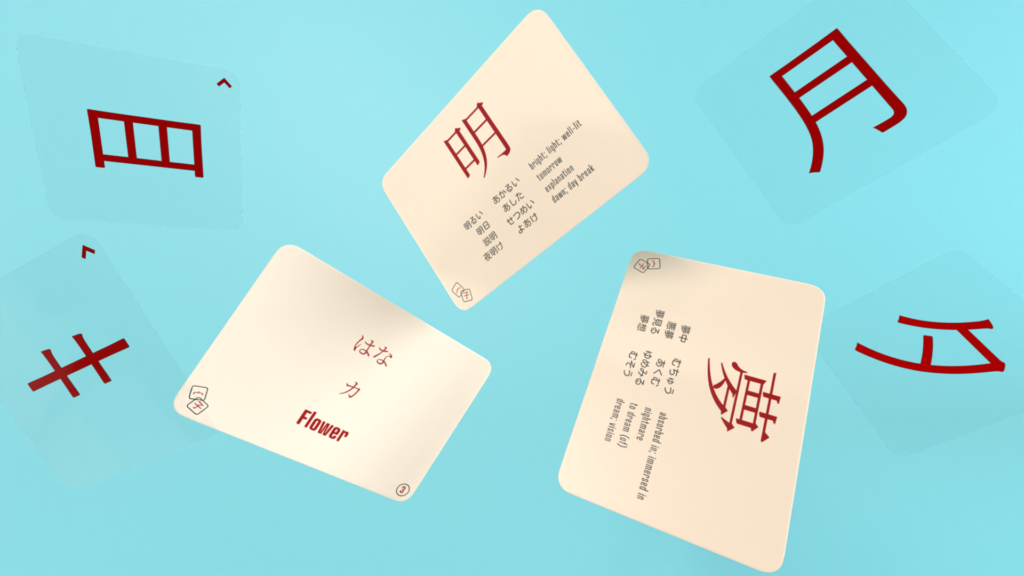
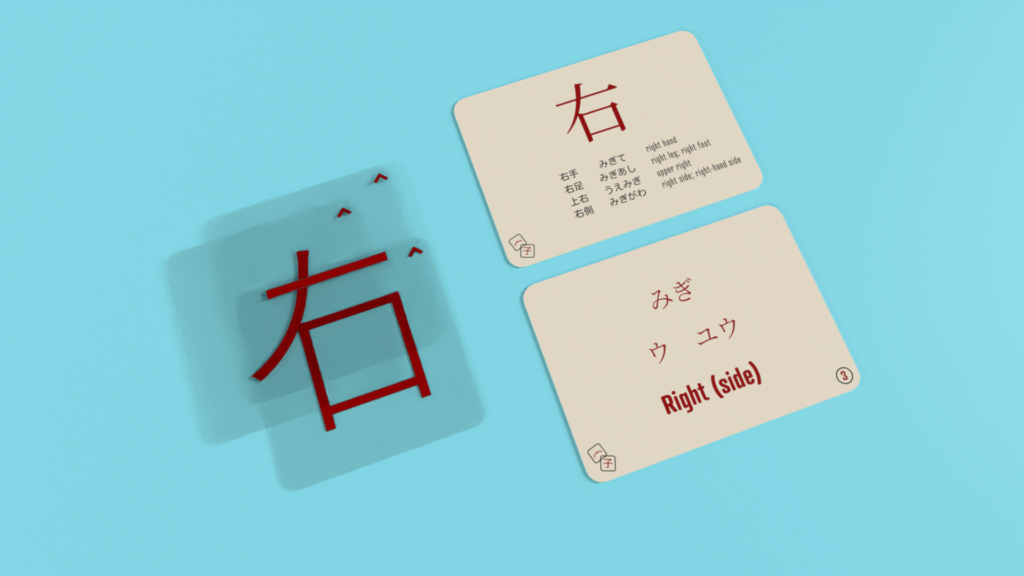
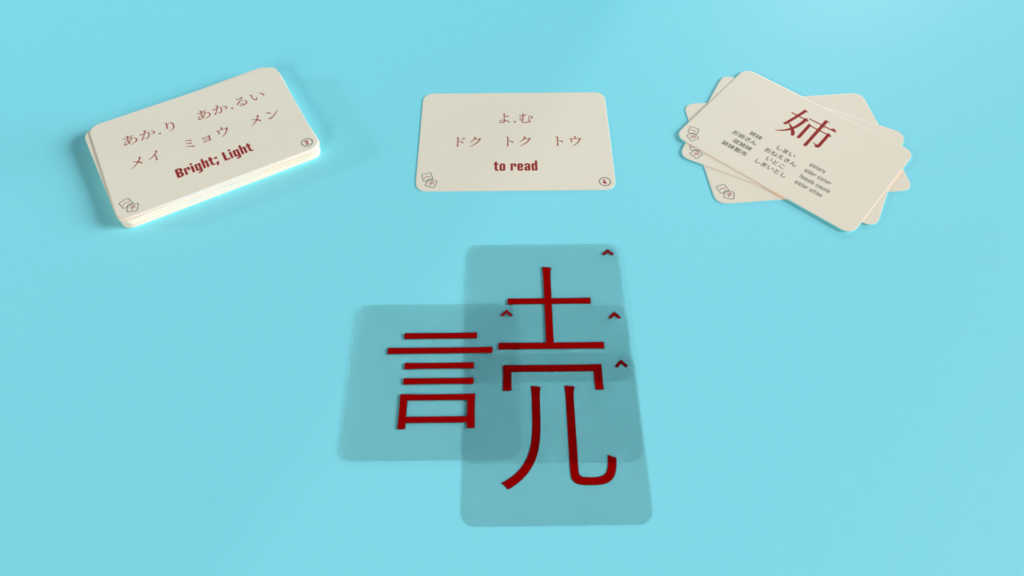

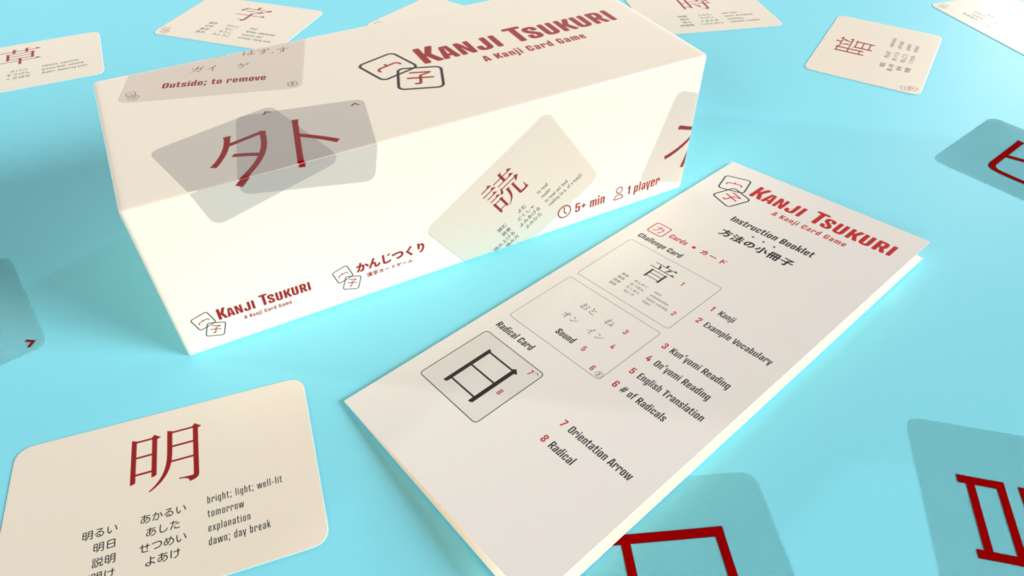
All images are rendered in Marmoset Toolbag 4


